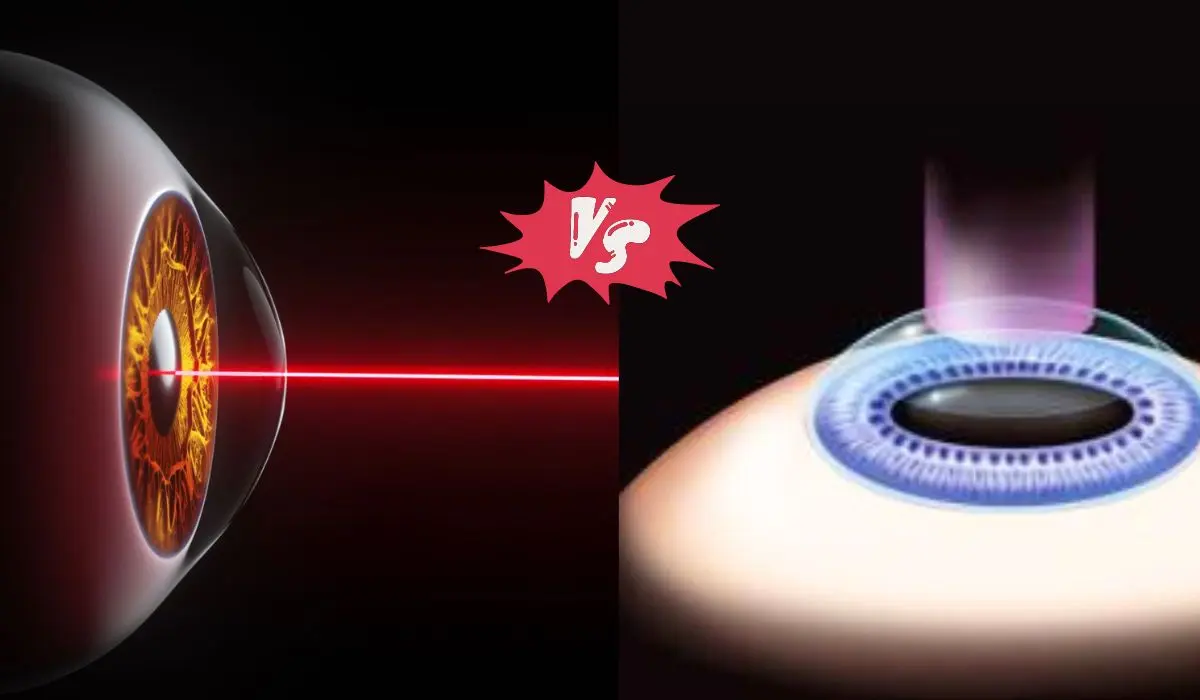The eyes are an important part of our body. As per the latest statistics from the World Health Organization, nearly 2.2 billion people worldwide suffer from visual impairment. But modern medicine has also advanced a lot and there are various treatment options to improve vision and correct eyesight. One of the latest and most advanced treatments among them is laser eye surgery.
The most positive aspect of this procedure is that they can easily replace glasses or contact lenses. Some of the major laser eye procedures available today are PRK and LASIK. This article helps you find out what kind of treatments are these and what are the basic differences between them. Have an enjoyable and informative reading!
PRK Vs LASIK – Major Differences
Both PRK (Photorefractive keratectomy) and LASIK (laser-assisted in situ keratomileusis) are some commonly used laser-based surgical procedures to improve your vision. Even though PRK was around the corner for longer times than LASIK, both are used to treat somewhat similar conditions.
These procedures are done to correct refractive errors such as farsightedness, nearsightedness, and astigmatism. Both processes reshape the cornea for vision correction but the difference lies in how they access the cornea and how the process is performed.
One of the basic differences between PRK and LASIK is that in PRK, the doctor removes the surface cells or cornea entirely while in LASIK, a small flap is made on the surface of the cornea to carry out further laser procedures.
PRK Process
So before starting the surgery, your doctor will give some numbing eyedrops and calming medication. Then the doctor will place an eyelid holder to keep your eyelids open during the procedure.
In the next step, your epithelium or outer layer of the cornea is removed using a gentle brush. Now your eye surgeon will reshape the cornea using a highly accurate laser. After the procedure, your doctor will place a contact-lens-like bandage over your cornea.
LASIK Process
Similar to PRK, before the surgery, the doctor will administer numbing eyedrops and use an eyelid holder to keep your eyes open. Now, a small flap on the epithelium is made using a laser.
After this, your ophthalmologist will gently lift this flap and reshape the cornea using the same excimer laser. Then the flip is placed back in the original position.

Which Is Better? PRK Or LASIK
Even though there are claims that PRK is better than LASIK as it doesn’t leave flaps on your cornea after surgery, this subject can’t be answered like that. Both laser treatments are safe and useful in their own ways.
While PRK takes more time for healing than LASIK, it can be a safe option for a high corrective prescription. But compared to PRK, LASIK has a shorter recovery time and it is less costly also. But make sure to decide which is better based on your medical needs. Some of the factors that you need to consider before choosing whether PRK or LASIK include:
- Thickness of cornea– One of the crucial factors that decide your laser surgery treatment is corneal thickness. If you have a thin cornea, it is better to go for PRK.
- Glaucoma– Are you someone who has a mild case of glaucoma? LASIK might be your ideal choice.
- Lifestyle factors– Another factor that influences whether to decide PRK or LASIK is your lifestyle. If you have an active lifestyle with rigorous sports activities, PRK might be good for you. The corneal flap from LASIK can be under the threat of dislodgement if you opt for it.
In any case, whether you are choosing any kind of laser surgery some of the key factors to decide are:
- Age – You have to wait until age 21 to get laser eye surgery. This is because, in case of a refractive error, it can stay the same when you get older.
- Eye health – Another key factor that determines whether you are eligible for laser eye surgery is your eye health. In cases of people with a history of eye infections or cataracts, laser treatment is not recommended.
- Refractive Error Degree – In some cases where there are high levels of refractive error, laser eye surgery is not useful as it can’t improve vision.
- Keratoconus – One of the primary conditions to have a LASIK or PRK surgery is not to have keratoconus. This is an eye condition that affects the structure of your cornea.
- Pregnancy – Laser surgery is not recommended for pregnant mothers. The hormones during pregnancy can affect the corneal shape and change refractive error.
Pros And Cons
Here are some of the pros and cons of both PRK and LASIK.
PRK
| Pros | Cons |
| High success rate | Risk of under or overcorrection of vision |
| Accurate correction in nearsightedness | Might cause cornea cloudiness or infection |
| Technically simple compared to other treatments | |
| Vision might decline due to age |
LASIK
| Pros | Cons |
| Quick and safe | Might cause visual distortion |
| Convenient procedure | Some patients might experience chronic pain and detached retinas |
| Reports of attaining 20/20 vision | Dry eyes, starbursts, and halos can be a side effect |
| Permanent improvements in vision |
Also Read:- What Is Healthy Eye Pressure? Understanding Optimal Intraocular Pressure
Conclusion
Going through the aforementioned points on PRK vs LASIK, you can understand that both PRK and LASIK are safe and effective options for improving eyesight. Even though both of them work by cornea reshaping, there are some smaller differences between the two.
But the point to remember is that when choosing an ideal treatment, you should consult your doctor and evaluate your aspects and needs. Only by this process, a treatment can be effective for you.







